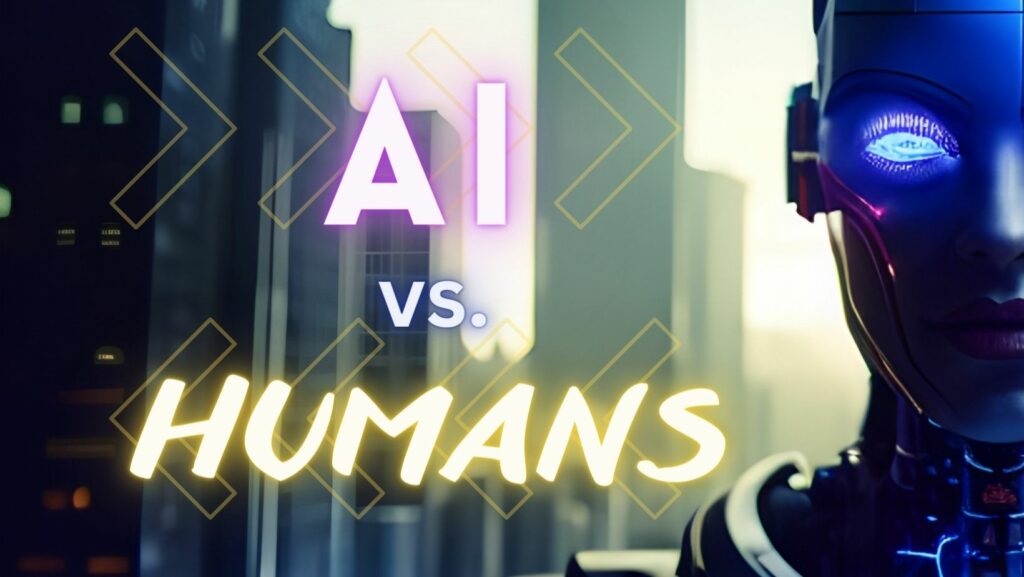Will AI replace human creativity?
Not a day goes by that ChatGPT isn’t in the news. Artificial Intelligence (AI) now offers solutions for everyone from high schoolers looking for homework assistance to chess players wanting to cut corners on their game play. Surgeons are competing against AI to game out whether they’ve made the right choices during surgery, and AI is being used for everything from determining what songs to suggest on Spotify to what flavors to put in various recipes.
Spoiler alert: Humans used to perform a lot of these tasks and jobs. So it begs the question: with AI rapidly becoming a feature of daily life, how much do we need to worry about it replacing human creativity and workmanship? Are we doomed to a future where robots are curating all of our playlists and menu choices? What would that future even look like?
What is AI?
Before prognostications get too gloomy, let’s assess what we’re really dealing with. The term “artificial intelligence” is a catch-all that encompasses various technologies that can perceive, synthesize, and infer data. Various computer programming languages, such as R, Java, and Python, are used for writing and training machine learning algorithms.
Simply put, these programming languages lay out a sequence of rigorous rules that the program must follow in any situation. Searching for something on Google? There’s an algorithm for that. Seeing a digital ad on Facebook or being served a playlist recommendation on Spotify? Algorithms run what and when you see these things, too.
Development of AI over the years
Although many of us are only just hearing about it, AI has actually been around for over 50 years. The term was first used in 1956 during a computer conference, but for those of us who are sci-fi fans, we know that writers and philosophers have long dreamt about days when automation and humanoid robots would rule the Earth.
For decades, engineers, scientists, and mathematicians toiled to make fiction reality but were constrained by challenges. For example, in the mid-20th century, it could cost upward of $200,000 (1950s value) to run a computer; such were the data processing capacity restraints. There were also issues with applying algorithms to real-life problems. Only in the past 30 years or so has processing capacity improved to the point where logic programming and thus true artificial intelligence is possible.
A graph showing the development of AI in relation to general processing speed [source]
Now that the computer processing power is available, AI systems absorb and digest large amounts of information and analyze them for correlations and patterns. They then use that information to make predictions about future simulations of the same situation. In this way, AlphaGo, Google’s AI tool, can beat the world’s best chess players, and image recognition systems can recognize and describe objects in images after viewing millions of samples. Well-built AI even learns much like the human brain: It builds on top of itself, so it gets smarter with each piece of information it gathers and synthesizes.
AI implementations
In the past 10 years, AI has been used in most industries, with a surprising array of applications. In some cases, AI tools have been applied to situations where the tool can do things better than a human, and in other cases, tools have been applied to save time and money. Concrete examples are always useful when exploring complex topics, so here are a few you may be familiar with (and others you may not know about):
Driverless cars – Engineers have used a type of AI known as neural networks to build cars that recognize traffic signals, obstructions, road signs, and other features of travel.
Manufacturing robots – In some manufacturing processes, robots are used to generate purchase requests or handle complex orders that come in from various sales channels. They’ve even been used to detect damage and faults in the overall manufacturing process.
Automated financial investing – Algorithms can be applied to make investing decisions, which brings down the traditional costs of having a money manager who analyzes markets and makes those decisions instead.
Copywriting – ChatGPT and other AI tools can write essays, blogs, and articles on a range of topics. Many schools are currently grappling with how to penalize students who use AI in writing their assignments.
Chatbots – If you’ve ever used a chatbot to speak with customer service, you may be familiar with a robot attempting to solve your problem before you’re connected to a real human being (if that ever happens).
As computer processing limitations have declined, AI tools have become more affordable, meaning that even very small businesses can use them. This has meant that companies of all sizes can cut the costs of humans doing work and invest in cheaper tools that can often do the same thing. For example, the cost of implementing a chatbot is much lower than paying humans to respond to customer queries – and chatbots are available 24/7, without the room for human error. It sounds pretty sweet, looking at it from a dollars and cents perspective.
AI and emotional intelligence
And here we arrive at the million-dollar question: Will AI replace jobs and human creativity? If machines can learn to drive cars, manufacture products, write essays, and act as customer service agents indefatigably (and without pay!), what hope is there for those of us who need employment?
Firstly, it’s comforting to remember that AI systems are only as good as their foundational frameworks. Remember that AI is built by humans (although there are some new attempts to get AI to code itself, and that’s going well). Like all things we humans touch, the outcome is only as good as its inputs. For now, anyway, remember that AI builds upon itself much like human knowledge bases.
The more important consideration is the same one that drives literature, art, philosophical, and political debates: What makes us human? Can that experience be conveyed to non-human forms? While AI can learn, synthesize, and make decisions based on that learning, it cannot replace the human experience of creativity and emotion, at least not yet. And that’s what makes humans unique, layering on our experiences and human attributes – such as resilience, grit, tenacity, and a laundry list of others – to the mix.
While it may be scary that ChatGPT passed an exam given by a Wharton Business School professor, give an AI tool five minutes in a room with an angry client or a brief for a highly sensitive press release. It can handle the task, but it can’t add on the emotional intelligence that is still so necessary and valuable.
How creatives can harness AI
When it comes to marketing, emotional intelligence is crucial. It’s what allows us to make an impact, to tap into audiences, and to deliver creative that packs a punch. It’s a certain je ne sais quoi that makes audiences feel something and connect with content on a deeper level.
Alison is special because it lets humans do what they do best – create meaningful, thoughtful, and emotive ad creative that sparks responses in others. And it uses the AI for things best left to machines: What colors work best in ads? Text? Sounds and characters? Alison.ai can do all the analysis so your team can focus on creating the elements that sorely need the human touch to set it apart.
AI vs. people
In conclusion, AI has rapidly become a ubiquitous presence in our daily lives, offering solutions to a wide range of tasks and jobs that were traditionally completed by humans. However, the question remains: Will AI eventually replace human creativity and workmanship? While AI has been around for over 50 years, it has only been in the past 30 years or so that processing capacity has improved to the point where true artificial intelligence is possible.
AI systems are only as good as their foundational frameworks, and for now, they build upon themselves much like human knowledge bases. However, the more important consideration is what makes us human and whether that experience can be conveyed to non-human forms. While AI can automate many tasks, it cannot replace the human experience of creativity and emotion, at least not yet. Therefore, it is important to view AI as a tool that can assist and augment human creativity and workmanship rather than a replacement for it.
Want to learn how Alison.ai combines cutting edge AI technology alongside human creativity? Contact us here for a demo.


